William Beard
Between 2005 and 2008 I conducted a number of extensive interviews with Winnipeg filmmaker Guy Maddin as part of a book project. These conversations were always intended primarily for use as a research tool, and never specifically conducted with publication in mind. Still, I think that aspects of them may be of some interest to a wider audience. Maddin has furnished a host of accounts and views of his own work, most notably in Kino Delirium, a book-length interview with his friend Caelum Vatnsdal, and in the director’s commentary tracks on the DVD issues of his movies, but also in many, many interviews over the years. One of the tasks I wanted to tackle was to get a comprehensive and detailed narration from him of the birth and growth of his filmmaking techniques and styles.
Maddin’s extraordinarily ground-zero beginnings in production-without practical knowledge of any kind, or any kind of institutional affinity-were quite unusual, and from the start the kind of cinema he produced was simultaneously aesthetically sophisticated and technically primitive. One of the several unique things about him as an artist (or at least as a successful artist) was his attempt to do quite ambitious, elaborate and sophisticated things with essentially no materials and no technical expertise.
The somewhat bleeding chunk of conversation you see here is taken from sessions in July, 2006 that concentrated on Maddin’s evolving use of the camera, stretching from his first film, The Dead Father (a half-hour short from 1985) until the then recently completed shooting of Brand Upon the Brain! in 2006.
William Beard: I wanted to take you back again to the time you first really got interested in making films. You’ve told a story about how you basically just got a five-minute course in how to operate a 16mm camera for The Dead Father. I was wondering if you could talk a little about how the camera really became your friend, just as a tool, over the years. Could you talk about what your relationship with it was? I guess at first you just pointed it at stuff and after you figured it out?
Guy Maddin: Well it’s true that after the first day of shooting on The Dead Father (well it wasn’t even a day, it was more like a few hours), I just called it quits because I was tired, so I scheduled another shoot for 8pm the next night. But my photographer Bob Russek didn’t show up because he was depressed and just stayed in bed. So I had to shoot it myself. […] But I was amazed because even in the beginning of my movie mania days when we were all watching films on a projector in Steve Snyder’s[1] apartment, I had to get someone else to thread the projector because I was just scared. […] So I was pretty astonished that I could learn how to work a light meter. It is just a bunch of numbers, and I didn’t know why they worked this way, they just did. I didn’t want to know about foot-candles, I just wanted to know what number corresponded to the one I should put on my camera. So I was taught that within five minutes, and how to work the camera. It must have been no more than five minutes. I had my lead actor there, John Harvey, as a backup in case. He also knew how to work a projector. And then I was so emboldened with confidence, technical confidence, that I did work the projector shortly after and even a light. But um, the camera didn’t quickly become my friend, and [yet], I liked being the cameraman – something I never expected. Because then you only had yourself to blame if the shot didn’t turn out well. You could be angry at yourself, which is a productive rage because then you can forgive yourself, but then learn a lesson from it. Whereas, if you get your rushes back and let some cameraman make a bad shot there would be no point in yelling at him. Yeah, just by eliminating the middle-man and going straight to the camera myself I made spectacular and horrible mistakes of ineptitude, but some of them I quickly incorporated into my style. Bob Russek would never have made those mistakes. And then I never would have really had any style because I made my first movie without even thinking of a style; I just made it as a narrative, a story, a script. That is the way most kids I encounter are. They say, “I have this movie script, and I’d really like to make it,” and they don’t have any passion for a look or a sound or a style of acting or anything like that. I don’t think they’re idiots for that because I didn’t either, but I count myself as lucky that I chanced into a visual style. […] When I started making Tales from the Gimli Hospital (1988), I still think I was expecting it to look like Greed (Erich von Stroheim, 1924) for some reason, even though I didn’t have massive locations and lots of costumes and things. I expected it to be mostly sunlit and deeply detailed. I think I was just thinking of Greed because it was like Gimli Hospital; it had two guys in it that were basically willing to hammer each other to death in some horribly austere place. But then when I set about to shoot it, I had one 350-watt light in my camera and none of it looked like Greed; it looked like Gimli Hospital.
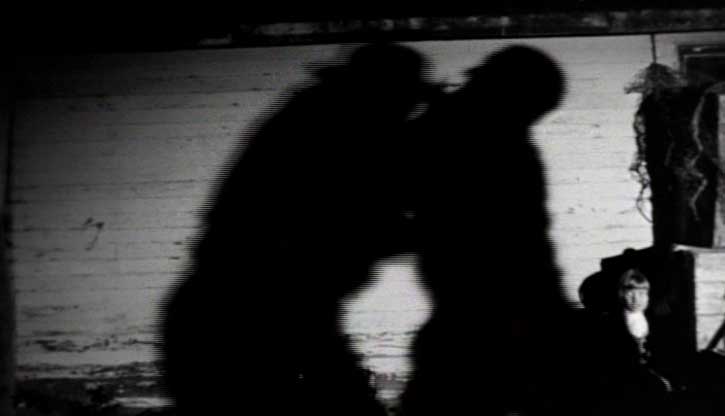
Tales From the Gimli Hospital (1988)
WB: Would it be fair to say that Gimli Hospital ended up looking Expressionist partly just as a result of the shooting conditions, the fact that it was being shot indoors…?
GM: But I didn’t know how to shoot any other way. I tried the basic three-light setup very early on and I just ended up with three nose shadows on everybody, and I just unplugged the lights until I got down to one nose shadow, a very dark one and an expressionist one, and then would just reposition the actors. The thing I remember doing, mostly because John Paizs[2] (another filmmaker who has far more experience than I here in Winnipeg) suggested I do this: always keep your camera on a tripod and frame your shots up nicely, tableau style, and just don’t even move your camera.
And now, years later, I do exactly the opposite. But at the time, I think it was good advice, cause it enabled me to at least, you know, I need to attack these movies one step at a time and those little tableaus gave me little building-block units that I could arrange. And they also played into the kind of mannered acting I had. He also suggested a proscenium arch, you know, just above the tableau, and things like that. That’s not why he gave me that advice; he told me because that was the way he made movies, and he was just passing on his experience. But it was good advice because other Winnipeg filmmakers were attempting all sorts of hand-held shots, and in the mid-80s that couldn’t have been more out of style.
WB: Well, handheld 35mm, which we all saw back in the period of the 70s, was pretty awful too.
GM: It had kind of a thing that quickly went out of style, maybe like air guitar. It was great, but most of it was just intentionally raw. If you watch The French Connection (William Friedkin, 1971) where the cameraman is chasing down Gene Hackman, it’s perfect now, but you know, you can tell that it went through a period where it looked ugly for many, many years. I love it now, but definitely when I first picked up a camera, that stuff was so out that I thought my only chance of making things look like they had some control was to really bolt the camera down. It wasn’t until later that I discovered that through still photography. I couldn’t for the life of me take a good still picture of my daughter or, you know, my Christmas presents, things like that. But then I adopted the shoot-from-the-hip method with a still camera. I got way more really bad pictures, but way more good ones too. At least they weren’t all mediocre. So I later started shooting from the hip with my movie camera.
WB: When you said you always used a tripod, the first thing that pops into my head is composition, because if you have a stable camera, composition becomes very important. And if you have good composition, you should be able to be a good still photographer.
GM: Yeah I know, that was bothering me, but I found when the black-and-white film came back from the lab it looked nicer, even with a tripod-basically moving still photos. They looked better than the Christmas pictures I took because those were just a flash bulb and there was no chiaroscuro. There was no narrative reason for having anyone in the snapshot pictures pose a certain way, and somehow just having a narrative reason to have a pose filled my movie frames with more melodramatic drama and more interest-power for me. I still have problems with still pictures; I just don’t think like a still photographer.
WB: It really did seem to me when I was watching Gimli Hospital that some strange chemical reaction was taking place while you were making that film where you were discovering a style that would actually turn out to be very potent for you. It looked as if it was coming from the limitations of your production method and the limitations of your expertise.
GM: I was getting pretty high on myself, because I realized that I had already learned all I needed to learn easily [laughs], and everyone else was beating himself or herself out trying to master the technology. And I just felt that I had entered the realm of film technology through the back door, without having to pay the price of admission. I was getting away with producing stuff with a visual style that people should know better or acknowledge as having a visual style. I really felt that I had taken a short cut, and that I would have to pay for it eventually if I wanted to make mainstream Hollywood movies-which I vaguely expected to do one day. But I was happy to pay later, if I could get attention for my pictures now. Maybe that would mean I would get bigger budgets one day.
So it is not that I needed the attention, although I probably did, I was just really happy to advance in any area, whether it be attention or atmosphere. It certainly wasn’t in any area of technical expertise; I just learned that a light looks better from here. Yes, it did sort of restrict my compositions to ‘tableauish’ sort of things, but my tastes ran to the kind of narratives that were actually bolstered by tableaus and melodramatic stylizations, anyways. All of those things were suddenly feeding off of each other, and the thing was kind of just running itself. I got quickly used to what I was doing, and I could even work very fast at this freshly learned skill and so I not only seemed to be the best at what I was doing (maybe the only one who was doing what I was doing), but I was really fast at it too. It wasn’t dreary business for me; it was fun.
WB: Just as a viewer, if you go from Dead Father to Gimli Hospital to Archangel (1990), it’s an astonishing progression.
GM: Yeah, I was pretty amped up about making huge leaps through film history; it wasn’t a programmatic journey, you know. I did go from a half-hour, part-talking momento mori to whatever Gimli Hospital is, to a war picture with dialogue and recorded oddly. I wasn’t literally trying to go through film history, but I did sort of want to touch on as many outré genres, genres that had fallen out of fashion, as possible. Which is why, when someone suggested I make a mountain picture, I was all over it. I had never even heard of them before, and so I really wanted to find more genres. I naively and arrogantly thought I could make a Bollywood picture someday [laughs]. I won’t be making any Bollywood movies. But I’ve always loved them.
WB: The bad sound in Bollywood movies would suit you just perfectly though.
GM: Just everything they do. I love the fact that it’s just full of a million genre shortcuts that the hoi polloi can navigate very easily-[that] is exciting to me. Just the way the film of Hollywood’s past years had melodramatic shortcuts and signs and symbols, signifiers for closeted populations and all that stuff. It was kind of exciting to become, maybe not fluent, but conversant in some of these languages as well and really send out some odd, misleading signals to viewers out there inadvertently. Kind of like being a boor who just learned a new language full of homonyms, and he’s using the wrong phrasing around some really delicate subjects.
WB: About your progress. The photography, the look of The Dead Father has this very flat documentarist look (even though there are some elements such as the nighttime scenes that are starting to look more dramatic), and then Gimli Hospital just suddenly plunges into this Expressionist world. Even though it was intended to look like Greed, it ended up looking like The Cabinet of Dr. Caligari (Robert Wiene, 1920). (That’s not quite right, but you know what I mean.) Everything becomes artifice suddenly. And then in Archangel: I’ve been looking at that film and my admiration for it has always been high, but it has really been blossoming, and I just love it. […] So much of the photography in it is gorgeous! By the time you were making Archangel, were you conscious of being in control of a more complex sort of visual device?
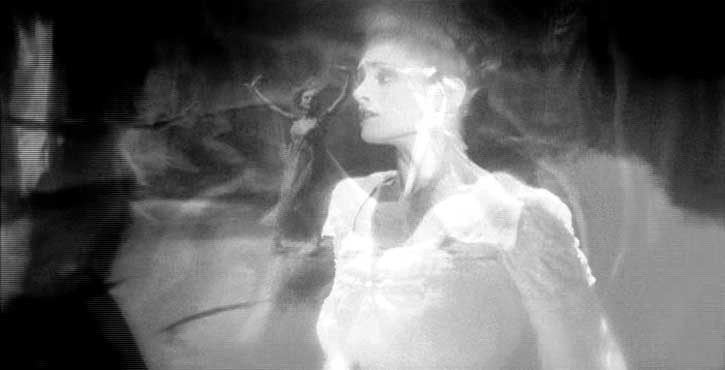
Dracula – Pages from a Virgin’s Diary (2002)
GM: Yeah, I remember thinking to myself-and George Toles[3]had made a comment to me, he said, “I’d like to see for your next film that you don’t have so many black backgrounds.” Like Gimli Hospital had a lot of black because I didn’t have sets, just Kyle McCulloch or Michael Gottli against a black background, or my light didn’t illuminate their faces so it just faded off to black. So I knew I would need more lights than just one, and I knew I wanted someone who knew how to light for me, and with the good temperament not to fight me. Because on the local film scene I was still being told things like-when I went to try to learn how to load an Arriflex (which would actually enable me, unlike a Bolex, to have shots that would last up to 12 minutes instead of 25 seconds so you could have in sync dialogue), and I went to the Winnipeg Film Group to be taught how to load it and the equipment guy there told me he’d refuse to teach me because “I was a director, and a director shouldn’t load cameras, cameramen should load cameras. A director should just…” And so this was the sort of attitude I was facing all the time. Or, I would get someone from the Film Group to just, in Gimli Hospital, put his hands in a pair of puppets (I had a puppet show in it) because I needed to work the camera; and he started arguing with me after I did the first take when I said, “Now just switch the hands with the puppets or now get a third character.” There was a Punch and Judy scene with the devil or whatever. He’d say, “Well Judy was on my left hand before.” And I said, “Well that doesn’t matter; this is, ah, later.” And then he started getting into a continuity argument with me about where Judy should be. […] These were the kind of people in the film community you met at every turn, and they were infuriating. So finding a person to help me set up lights-who had the right temperament-was way more important than finding one who knew how to work the lights. It turns out Kyle McCulloch recommended his friend Terry Reimer who never said a word, and who only watched the first 30 seconds of rushes just to make sure there was an image there, and then you would see a door open, a big crack of light and his silhouette in it and then he would leave. […] The first day’s rushes were not quite what I wanted. There was just too much fill light or something. So I showed him a really degraded copy of Renoir’s The Little Match Girl (1937), and said I just wanted high contrast lighting like this. He just said “K”; just one syllable was his only reply. The last batch of rushes came out looking much better. They didn’t look like The Little Match Girl, which was fine. That looked like a movie that had been Xeroxed about a hundred times by the time I got my print but he just… I later learned about contrast ratios.
WB: He was just lighting or did he do camera work?
GM: No, I did all the camera work, and I had a camera assistant that just reloaded all the time and occasionally when my eye got sore I’d give him the camera for a while.
WB: Eventually you got around to using a cameraman.
GM: Yeah, I did, on Careful (1992). Since Terry was no longer around, I asked another cameraman I admired, Mike Marshall, to come and do some tests with me of colour. I told him what I sort of wanted, and he had his own ideas about some things, but I told him basically that I…I got my way anyways because I was the production designer and I painted everything a certain way. He was really open to experimenting as well. And we agreed that we would basically do what Terry did for the black-and-white sections of that movie. And then for the colour sections of that movie, through our experimenting, [we decided to] overexpose everything by three stops and then have it darkened later back down to proper exposure. It was kind of to repress the colour; we thought we’d go for a ‘Repressovision’. […] I painted the sets-like the blues, I got the deepest blue possible, the most colour-saturated, and I had everyone’s faces painted apricot. All the Caucasians in the movie-everyone was Caucasian-they got apricot plus rouge; it was a really saturated flesh colour. The colour was just really saturated, like you took the first colour TV and turned the colour dial all the way up to 11. So I was doing this on the set: literally the equivalent of Antonioni’s painting a park green to get a greener green. I was just doing that with my sets, sometimes just reducing the amount of colours in a frame to two or three, and just controlling it with paint, and then by overexposing it, it would repress it. You know, what I was hoping to get was-and I kind of forgot to do it -was either wobble the aperture or wobble the frames per second, so that the colour, the saturation, would wobble a bit. Like it was trying to come out, as if it were a close-up of a robin’s egg with that beautiful robin’s egg blue and not a baby birdie, but the actual blue was trying to be born, and it was trembling and pecking at the shell and becoming more or less saturated as its little blue beak gained and lost energy in this exhausting process. So Mike and I got along really well, and I had him working with me on my camera. I can’t remember the ratio, but I probably got him to shoot about half of Careful. Every now and then my eye would get tired, or I would think that I’d better just change up the look here because my tableau vision was really starting to feel limiting, and I needed something fresher. But every now and then I would get some rushes back and think, geez I wish I’d have done that shot because he’d used a fish-eye lens or a wide-angle lens for such a close shot. I knew my film history better than he and the film vocabulary called for no wide-angle lenses. But he gave me things that I could have never have gotten. He gave me lots of good ideas, and I really liked working with him. And I have probably worked with him more than any other cameraman.
WB: What range of lenses did you have? Did you have separate lenses or did you just have the big zoom one?
GM: I just liked having a zoom because then you don’t have to move so much you can just zoom in. And I even use a zoom now in the middle of a shot, which was considered very gross for a long time.
WB: Since Careful you’ve had the occasional bump in the road.
GM: Yeah, it wasn’t always so happy. Then somehow, I always really felt I was at my happiest when I could be at the camera most of the time or half the time because I was beginning to count on those accidents that only I stumbled upon and which other, more technically proficient, people wouldn’t. And I found that as the shoots got bigger and more organized, the accidents were rarer anyway because there was always someone to double check something. And worse still, I couldn’t steal shots, candid shots, of the actors because there was always someone who noticed when I was rolling the camera and run in with a slate. I would just see a look suddenly, a close-up; I’d zoom in on somebody when they were just relaxed and daydreaming. I would see a look I realized I could use somewhere, and I’d start rolling and some really well-meaning crew member would run in with a slate and just get it. Obviously, now I realize I should have just talked to them and asked “Could I just have a tail slate on that?” or “Could you just leave it? Because I’m the editor anyway; I’ll figure out where to put it.” Then, by the time I did Twilight of the Ice Nymphs (1997), Mike Marshall was sole DOP, and we had an agreement with the union, which forbade me from moving the camera. And then it was 35mm, and I didn’t understand the magic trade-off between resolution and fakery and the balance was just thrown off. I no longer worked quickly. Mike is really meticulous and we stopped working together because I think he was tired of hearing how slow he was. […] By commercial standards he was fine, but I know in Twilight I only got an average of 14.5 shots per day and the industrial average is 25-30 or something like that, which is way too slow for me; I’d prefer 60-150. They are not really setups; I am just firing away. I just need footage, lots of it. My producer in Twilight negotiated short days with the union as well – so if I would have had full days I probably would have got my industrial average, but I think the days were negotiated so you couldn’t go overtime or something. So I was really hamstrung visually. And it was a really ‘talkity’ script, so it ended up just being these long tableaus in medium shots of people talking, and it was a visual disaster. So I didn’t serve the script well, but I wasn’t able to anyway. Everything bad just happened at the same time.
WB: Then on Dracula – Pages from a Virgin’s Diary (2002) you were in there yourself with your 16mm and 8mm cameras.
GM: Yeah, with Dracula I had intriguing and frightening restrictions, which were actually liberating.
WB: Because you were dealing with an already existing production.
GM: Yeah, and I was terrified. I’ve always been more comfortable with more claustrophobic sets and very small womb-like compositions, encouraged by the fact that the 350-watt bulb, the one I used for Gimli Hospital, could only throw about five feet before it got too dark, so everything was kind of composed like a child’s story book. Like a story about bear cubs living in a hollow tree or something, there was always something surrounding them, enveloping them in darkness at every stage. So I needed to open up Dracula because when a ballerina needs to tell a boy ballet dancer that she loves him, she needs about the space of a football field worth of dance floor to say it. And I realized that the sets couldn’t be claustrophobic unless I could figure out ways to capture the motion-breaking it up and using smaller pieces and composing them like a David Hockney. And also, even more frightening, was the fact that dancers can only dance about six hours a day, and the Dracula, the omnipotent Dracula, can’t even lift a 90-pound ballerina over his shoulder after five takes, so you have to get everything in one or two takes (which is fine with me because I like moving quickly). So that was when I started covering it kind of like a sporting event: with two or three or four cameras going at once, getting it from a number of angles.
WB: So at that point you had up to three other cameraman with 16mm cameras?
GM: Sometimes, yeah, I was quite often the tertiary or wildcard camera, and my footage wasn’t used that much. I had a key camera-this probably should have been reversed-it was a Super-16 camera operated by Paul Suderman who was a nice fellow, but I realized I hated the look of the Super-16 compared to the Super-8 stuff that Deco Dawson[4] would get about half the time. Deco, who ended up virtually co-directing the film, operated the 16mm Bolex about half the time and traded off with me with the Super-8. Quite often Deco got the key close-ups while Paul was changing the head on a giant crane or something like that or while they were trying to figure out a moving camera shot, and Paul would get the master shots or just try to cover the whole ballet from a distance. But the real shots which were the MVP ones and gave the movie a sense of close-ups with faces of the different actors, came from cameras Deco and I quickly were able to go in with. As a matter of fact I remember Deco, quite inventively (because unions forbade us from moving lights), had this really strong light over this panel of storyboards I liked to have and there was enough foot-candle power off the reading lamp in the dark corner of the studio so you could do close-ups. In between shots he would go take the ballet dancers over the reading lamps and get shots of them, and there were no union violations, the lights were never touched. And you just move actors around until lighting was good. So you regulated the lighting by moving the actors, rather than the other way around. So he was just stealing shots. And then I would just hide behind a palm tree and get coverage sometimes.
WB: So for Saddest Music in the World (2003), then, you had a DOP?
GM: Well there, by that time I knew, once again, that Saddest Music would be my most ambitious picture yet, and I wanted to get really big sets. […] You know, in retrospect, I probably could have gotten away with really small sets and filmed it maybe more comfortably, but I tried to experiment with really big sets and then I realized I still didn’t know how to film them. And half of them don’t even appear in the movie anyway, as it turns out, because I kept forgetting to film the big sets. I just kept going, “OK, we’re on this set, I’ll start with a close-up, and end with a closer close-up,” or something like that. But I knew at the beginning I would need a cameraman, once again with a wonderful temperament, who knew his stuff. So I interviewed some people with the help of Rhombus Media and we decided on Luc Montpelier, who’s a really good guy. But once again I was the boss in charge of framing the shots up, and I forgot to get the sets and there were some beautiful sets that were built and never photographed, properly, you know. It was really strange.

Cowards Bend the Knee (2003)
WB: Well, looking at many of your later films, and I’m thinking of I guess mostly of Dracula and Cowards Bend the Knee (2003), there’s an impression created of more kind of a hand-held swooping, almost improvised, camera movement. And I do remember seeing a CBC documentary on the shooting of Dracula, and there you are just kind of running around with the camera and improvising.
GM: Yeah I’m trying to find the shot… I was getting confident that I could just find something if you just kept moving around, and why not shoot while you’re moving around, because if you find it, you’ll never find it again.
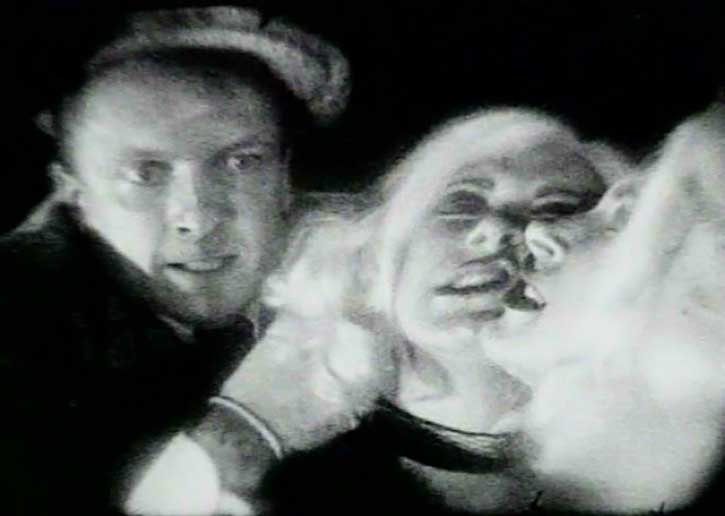
WB: So Dracula is, therefore, much more visually dynamic because there are a lot of other things going on in Dracula, too.
GM: Deco Dawson really encouraged me there too, you know, because he somehow (even though his own student movies in my class had never been quite that dynamic-they were dynamically edited, but they didn’t have that much camera movement), all of a sudden […would] hurl himself onto the dance floor and slide up into a position right next to the dancers. And so I let him do that for a while because I was too fat; the dancers would bounce around too much. And he seemed to really know what to do too, so he was really capturing a lot of the motion in the bottle. That was my chiefest fear-getting the motion of dance in the most interesting way because dance films are so boring to me and to most dancers too. I even asked the dancers what their favourite films were, and they said they were bored by most of them. It was when I was actually up on the dance floor with them watching Dracula for the first time that I noticed that the dance floor gave when they landed beside me, that I got sprayed with their sweat, that their tendons and panties ripped, [that I could] hear their stomachs growling, little moans; it was more like football practice or a hockey game than the dance we see in dance movies. They always try to make it elegant in dance films, and I talked to the choreographer [Mark Godden], and we agreed that a far more athletic and primitive and rough-and-tumble kind of dance would be more interesting anyway. He had no qualms about the dancers’ bodies being cropped off and the dancers liked having close-ups more than that tasteful distance all the time. They loved their close-ups. The only thing he [Mark Godden] hated, was when you shot a dancer from behind. I never knew about that, I’m still not sure about it, but dance-pieces are always choreographed for the house, and there is a kind of prestidigitator’s set of secrets that are given away if you show clumsy old Orson pulling the concealed rabbit from the seat of his pants before pulling it from a hat. This is what you are doing to these dancers if you shoot them from behind. But that is what I had to do from behind a potted palm or a bank of fog because the choreographer kept flipping the dancers around on me whenever he saw a camera pointing at them. But I was determined to get 360-degree coverage of them, so I feel that was the only score on which I betrayed him. I did make him cry, and he was no sissy.
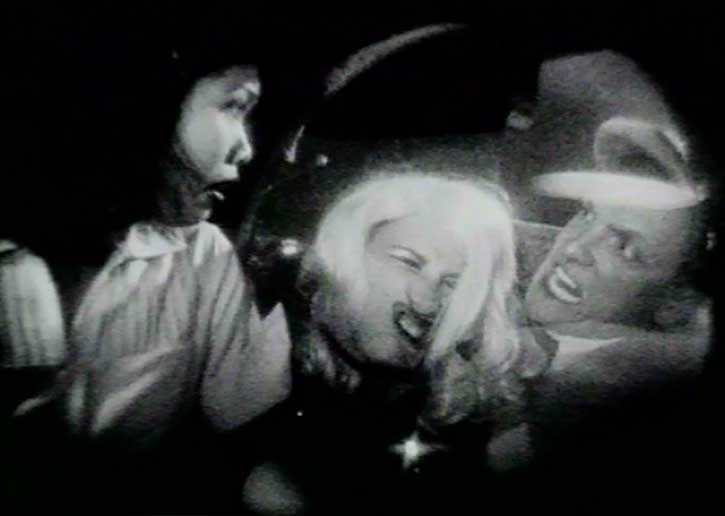
WB: Were they not pleased with the result?
GM: They may have had some reservations, but they never voiced them to me. I think they were pretty pleased, and the producer was pleased. And the producer and choreographer and I are speaking about working together again, so I think everything was okay.
WB: So then you had Super-16mm and Super-8mm on Saddest Music.
GM: Yeah, I kind of thought it worked on Dracula, and I just thought I know that the look of the three different formats, it’s so smooth. Whereas with a Bolex, it’s 24 frames per second, but I think some of the shutter speeds are 1/60th of a second and some are like 1/58th or whatever. So there is a subliminal flicker, and it slowly fades out of sync during 30 seconds of wind. But if you get a more sophisticated Super-16 or one of those 16s with a crystal shutter or crystal mechanism to keep the sound in sync, it looks like video instead of Bolex 16, and then there is Super-8 which looks even more filmic still. You are really in contact with your inner ‘grainiophile’ when you are watching Super-8. So I just thought that for this movie I still wanted as an insurance policy three different formats-those three just to keep as part of the vocabulary any acting inconsistencies or any editing inconsistencies. […] Just a kind of primitivity that I thought, if it was ingrained right into the randomness of the film stock used, then I could buy some good will from the viewers in some of the other inconsistencies. Unfortunately, whenever someone was talking you had to use the sync sound camera so it ended up becoming kind of the main camera. And then the silent montage stuff became Super-8 so it became too…the three existed in ghettos. And I didn’t really like that. That has to be planned out more next time.
WB: And for Cowards Bend the Knee?
GM: That was just straight Super-8. I thought that Cowards was going to [be] about 12 or 15 minutes long, but I scheduled five shooting days because I don’t like working long and hard days, and I just kept shooting without even consulting my script. [The finished film runs 66 minutes.] I guess I had just boiled the script down so much that I had it in my head. I just shot it in script order as much as possible, […] set up the actors, and then just started swish-panning around and quite often not even looking through the camera. And if I wanted a close-up of somebody, I would just suddenly find that person and start walking toward them with the camera and get to their face, not really looking through the camera. And the cameras just got comfortable acting. Somehow, the more I just swish-panned back and forth between actors-or maybe I was shouting orders out at them, or maybe they just got into the spirit of the rhythm, my arm extended rigidly with a camera at the end of it, must have reminded them of a metronome-and the faster I swish-panned back and forth, it seemed like a cue to them to just rip-dial up their performances as well. So I felt like a conductor with a baton, sort of whipping up an orchestra into a fury when I had like seven main characters.
WB: You were the only one with a camera, I guess.
GM: Yeah, that time I just shot by myself. And I was shooting my own autobiography so it didn’t occur to me to have someone else. No, that is not true. I did, I had my friend Rubén Guzmán. He shot Super-8 on Saddest Music and sort of replaced Deco as my wildcard. I just, to this day, I just feel better if I just restructure the hierarchy that hasn’t been working so well for Canadian film. It’s just hard to be that person who adds another person to the hierarchy, but he definitely seems grafted on. And Deco suffered pretty badly the contempt of everyone else in the crew on Dracula because there was no place for (he was called an ‘associate director’) but there was no place for an extra cameraman. They were used to taking orders from just one cameraman; it is hard to take orders from two. It was like adding an extra rank in an army all of a sudden and not telling everyone about it.
So it didn’t go that well, and Rubén was going to be that on Cowards but then he just preferred just pre-lighting some of the larger sets for me the day before I was due to go into the beauty salon set. He took pride in adding more than one light in some of the wider shots. So he lit, while I shot. I think he only shot one scene in the movie, and then on Saddest he did all the Super-8 stuff, but he suffered, even worse than Deco, the ridicule of the crew members who didn’t want Super-8 photography there.
WB: It sounds very tribal…
GM: I guess it was just their nature, or maybe I didn’t make it clear enough to everyone that they needed to respect him as much as they respect me. So he got chewed up pretty badly, but he also got some really beautiful footage.
WB: And then Brand Upon the Brain?
GM: That one I co-shot. Brand had an all-Seattle cast and crew. They had a cinematographer there, his name is Ben Kasulke, he’s really great, really nice-and I just asked if he would mind if I did most of the photography. And he said that was great, whatever. He was just happy for help wherever. And we quickly developed a rapport where we realized while I was shooting he might as well be shooting too, from a different angle. And so I can’t even remember which shots are his and which are mine. We must have shot the movie about 50/50. Only if there was a close-up and only one angle did maybe I shoot alone. But a lot of times I would just say, “My eyes are tired, you shoot.” It’s approximately 50/50 that we shot, and I can’t even remember which shots I did and which he did. So, two human metronomes with cameras beating out the beat for the performances sort of waving at each other and every now and then we would film each other, we’d see each other swishing past each other in the rushes. It was quite nice, but I have never seen a guy more adaptable to the spirit of the thing. I think good DOPs are like editors, they somehow get right inside the mind of the filmmaker or get into the spirit of the project and adapt themselves to it somehow.
Notes
[1] Stephen Snyder, Maddin’s mentor, friend and neighbour, was a professor of film at the University of Manitoba.
[2] Director of a number of films in Winnipeg in the early 1980s, culminating in Crime Wave (1985), Paizs was an inspirating example to Maddin of a local filmmaker who could just pick up a camera and make a feature film with minimal resources.
[3] Maddin’s frequent screenwriting collaborator, and probably his most important mentor, Toles teaches English, theatre and film at the University of Manitoba.
[4] A young avant-garde filmmaker who had attended Maddin’s University of Manitoba film class, and served as a visual diarist, and eventual collaborator, on Maddin’s short film The Heart of the World (2000) before working as a cameraman, editor and associate director on Dracula.

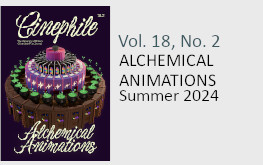
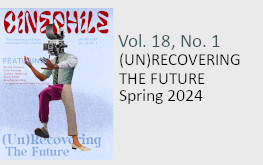
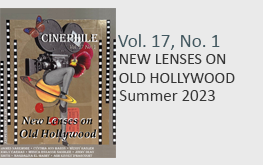
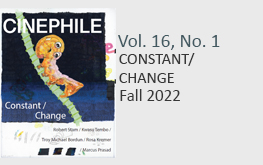
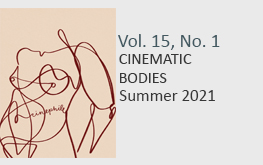
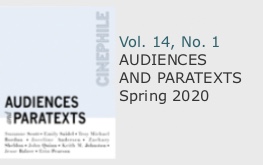
Excellent. Thank you for publishing.